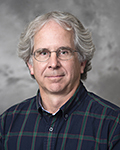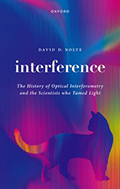Quantum Information Science--The 2022 Nobel Prize Backstory
Quantum Information Science--The 2022 Nobel Prize Backstory
-
 1. 2022 Nobel Prize in Physics fo…
0
00:00/00:00
1. 2022 Nobel Prize in Physics fo…
0
00:00/00:00 -
 2. Early Timeline for Quantum Mec…
47.414080747414083
00:00/00:00
2. Early Timeline for Quantum Mec…
47.414080747414083
00:00/00:00 -
 3. Bohr-Einstein: The Solvay Conf…
193.39339339339341
00:00/00:00
3. Bohr-Einstein: The Solvay Conf…
193.39339339339341
00:00/00:00 -
 4. Einstein-Podolsky-Rosen (EPR) …
345.01167834501172
00:00/00:00
4. Einstein-Podolsky-Rosen (EPR) …
345.01167834501172
00:00/00:00 -
 5. The Argument (Podolsky)
443.84384384384384
00:00/00:00
5. The Argument (Podolsky)
443.84384384384384
00:00/00:00 -
 6. Bohr's Response (1935)
591.89189189189187
00:00/00:00
6. Bohr's Response (1935)
591.89189189189187
00:00/00:00 -
 7. Bohr's Argument
664.16416416416416
00:00/00:00
7. Bohr's Argument
664.16416416416416
00:00/00:00 -
 8. Schrödinger Enters the Fray (…
719.386052719386
00:00/00:00
8. Schrödinger Enters the Fray (…
719.386052719386
00:00/00:00 -
 9. David Bohm (1917 – 1992)
793.92726059392726
00:00/00:00
9. David Bohm (1917 – 1992)
793.92726059392726
00:00/00:00 -
 10. Bohm- Ahronov version of EPR
967.967967967968
00:00/00:00
10. Bohm- Ahronov version of EPR
967.967967967968
00:00/00:00 -
 11. John Stewart Bell (1928 – 19…
1065.6656656656658
00:00/00:00
11. John Stewart Bell (1928 – 19…
1065.6656656656658
00:00/00:00 -
 12. Bell's Argument:
1271.237904571238
00:00/00:00
12. Bell's Argument:
1271.237904571238
00:00/00:00 -
 13. Polarization Measurements on E…
1412.645979312646
00:00/00:00
13. Polarization Measurements on E…
1412.645979312646
00:00/00:00 -
 14. John Clauser (1942 - )
1530.1301301301303
00:00/00:00
14. John Clauser (1942 - )
1530.1301301301303
00:00/00:00 -
 15. The sail boat
1705.4387721054388
00:00/00:00
15. The sail boat
1705.4387721054388
00:00/00:00 -
 16. Hurricane Camille (1969)
1753.6870203536871
00:00/00:00
16. Hurricane Camille (1969)
1753.6870203536871
00:00/00:00 -
 17. CHSH Inequality (Experimental …
1774.3076409743078
00:00/00:00
17. CHSH Inequality (Experimental …
1774.3076409743078
00:00/00:00 -
 18. Maximum Violation
1818.1848515181848
00:00/00:00
18. Maximum Violation
1818.1848515181848
00:00/00:00 -
 19. University of California, Berk…
1863.3633633633635
00:00/00:00
19. University of California, Berk…
1863.3633633633635
00:00/00:00 -
 20. Charles Townes
1927.9946613279947
00:00/00:00
20. Charles Townes
1927.9946613279947
00:00/00:00 -
 21. Clauser and Freedman
1969.0023356690024
00:00/00:00
21. Clauser and Freedman
1969.0023356690024
00:00/00:00 -
 22. Alain Aspect (1947 – )
2075.1751751751754
00:00/00:00
22. Alain Aspect (1947 – )
2075.1751751751754
00:00/00:00 -
 23. Two-photon Generation of Two E…
2113.8138138138138
00:00/00:00
23. Two-photon Generation of Two E…
2113.8138138138138
00:00/00:00 -
 24. Timing Experiments
2171.9719719719719
00:00/00:00
24. Timing Experiments
2171.9719719719719
00:00/00:00 -
 25. Anton Zeilinger
2289.1891891891892
00:00/00:00
25. Anton Zeilinger
2289.1891891891892
00:00/00:00 -
 26. GHZ 3-Particle Entanglement
2396.5298631965297
00:00/00:00
26. GHZ 3-Particle Entanglement
2396.5298631965297
00:00/00:00 -
 27. Quantum Teleportation
2482.8495161828496
00:00/00:00
27. Quantum Teleportation
2482.8495161828496
00:00/00:00 -
 28. Quantum Teleportation
2595.4287620954287
00:00/00:00
28. Quantum Teleportation
2595.4287620954287
00:00/00:00 -
 29. Detection of the GHZ State
2678.2782782782783
00:00/00:00
29. Detection of the GHZ State
2678.2782782782783
00:00/00:00 -
 30. 2022 Nobel Prize in Physics fo…
2699.4327660994327
00:00/00:00
30. 2022 Nobel Prize in Physics fo…
2699.4327660994327
00:00/00:00 -
 31. Further Reading:
2724.7914581247915
00:00/00:00
31. Further Reading:
2724.7914581247915
00:00/00:00
 David D. Nolte, the Edward M. Purcell Distinguished Professor of Physics and Astronomy at Purdue University, is an internationally recognized researcher in holography and interferometry. He received his baccalaureate from Cornell University in 1981 and his PhD from the University of California at Berkeley in 1988. He is the author of over 200 journal papers, has written 14 book chapters or encyclopedia articles, has secured 24 US patents in interferometric optics and biophotonics, and is a technical founder of two start-up companies based on biological applications of interferometric detectors.
David D. Nolte, the Edward M. Purcell Distinguished Professor of Physics and Astronomy at Purdue University, is an internationally recognized researcher in holography and interferometry. He received his baccalaureate from Cornell University in 1981 and his PhD from the University of California at Berkeley in 1988. He is the author of over 200 journal papers, has written 14 book chapters or encyclopedia articles, has secured 24 US patents in interferometric optics and biophotonics, and is a technical founder of two start-up companies based on biological applications of interferometric detectors. Interference
Interference










